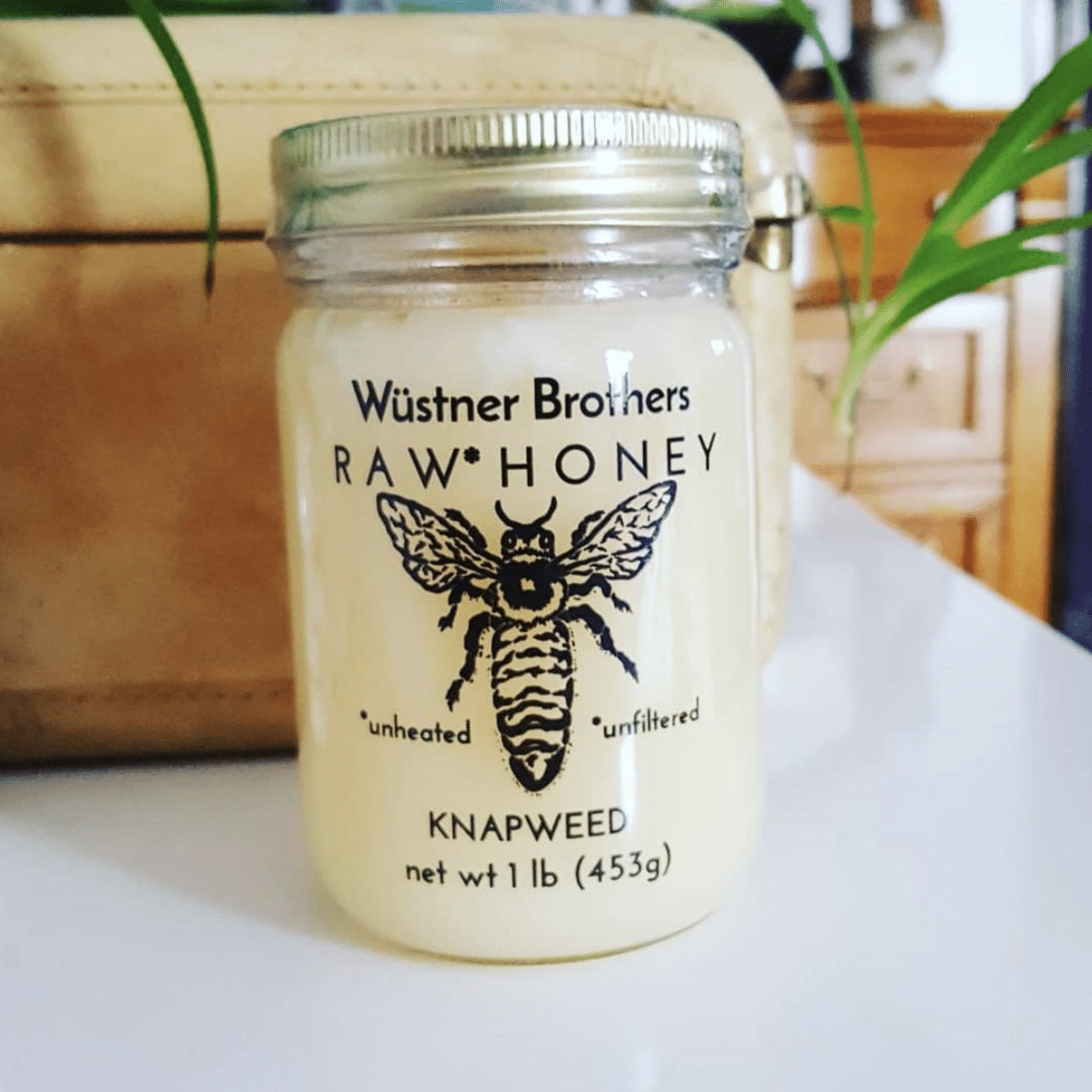
Here in Montana we are moving toward winter, a time of cold and darkness when fewer locally grown foods are available. Montana-grown honey is a great product to enjoy after the abundant summer months are over. And while the sweet sunshine and flowers we usually associate with bees is notably absent these days, our honey bees aren’t far away.
Bees don’t actually hibernate like other animals, despite common belief. Bees in Montana spend their winters shivering. No, really! Bees will create a huddle around their queen and shiver to create warmth all season long. All of this shivering is a huge energy spender for such a small animal, and they are able to do this thanks to the high energy food source they spend all summer creating — honey.
Honey is a complicated natural product! Put almost too simply, it is made from the nectar that bees collect from their environment. Because of this, there are over 300 different types of honey, which all vary in flavor and composition.

In the Garden:
If you want to encourage bees to visit your garden, you should grow a diverse variety of pollinator plants. Diversity means that bees will be able to find pollen sources in different blooming seasons, and will reduce the probability of pests.
If you are interested in starting your own apiary, reach out to the beekeepers in your community. They may sell nucs, or small bee colonies.
In The Medicine Cabinet:
Honey contains antioxidants and acts as a natural cough suppressant, and as a source of sugar, can help with boosts of energy. However, honey purchased commercially can be cut with corn syrup, which does not include these benefits, so be sure to purchase your honey locally!

In the Kitchen:
Honey Caramel Sauce
For a long time, honey was the world’s principal sweetener, and in the kitchen you can celebrate this sweet product by making a light honey caramel sauce using your favorite variety of honey! Enjoy drizzled over carrot cake, or as I did — in an ice cream sundae with ‘honeycomb’ crumbles.
Yield: Appr. 1 pint
Ingredients:
13 oz (by weight) Local Honey
¼ cup Water
Juice from ½ a lemon
⅔ cup Heavy Cream
3 Tbsp Butter
Measure out all of your ingredients. Place a small saucepan on top of a kitchen scale, and zero it out. Then add your honey, measuring it by weight. Measure out your cream and add it to another small pot to gently warm.
Add your water to the pot with your honey and bring it to a boil over medium-high heat. As soon as it starts to bubble, add your lemon juice, and allow it to come to a full boil. This will take approximately 10 minutes.
Remove your saucepan from the heat, and slowly and gradually stir in your warm heavy cream. Be careful, as you may experience some splattering during this process.
Once the cream is incorporated, add your butter a tbsp at a time, allowing each pat to melt before adding the next. If needed, return your caramel to the stove to melt the butter.
Allow your caramel to slowly cool to room temperature, and add to mason jars. Store in the refrigerator, and stir before using.
Thanks to our friends at Taste the Local Difference in Michigan for sharing this blog post.
